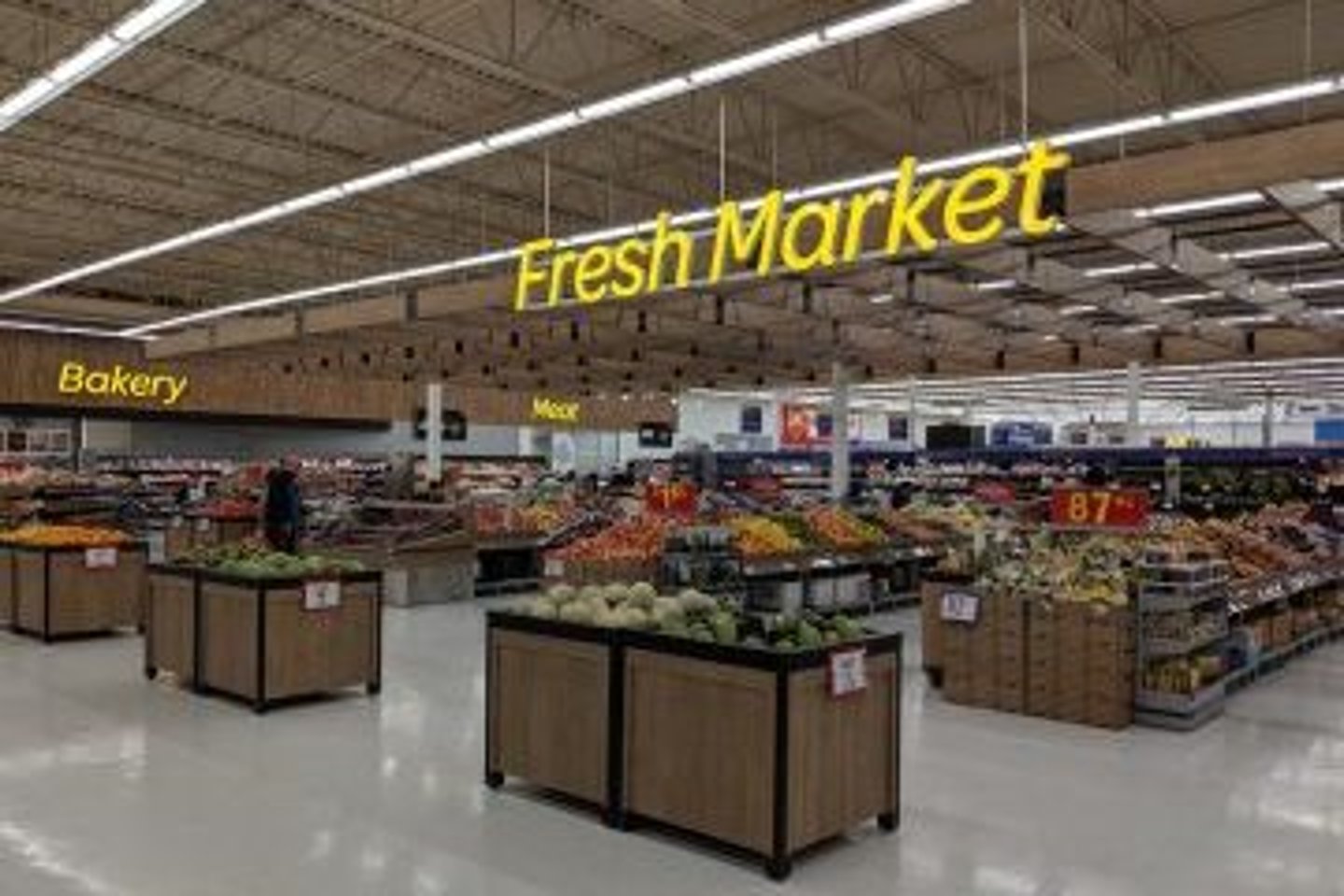Walmart introduces new Supercentre concept store in Toronto
Walmart Canada this week unveiled the latest evolution in its 13-year-old Supercentre format, a state-of-the-art “Urban Supercentre” that blends its e-commerce and bricks-and-mortar business to create what president and CEO Lee Tappenden described as a “seamless” shopping experience.
The newly-renovated Toronto Stockyards location, one of 135 Walmart Supercentres in Ontario, features the retail giant’s “Fast Lane” checkout technology—which enables customers to use their My Walmart app to scan products as they shop, bypassing the traditional checkout process.
Once shoppers indicate they have finished shopping, the app provides a barcode they scan in order to checkout, with payment processed through a card on file. The Fast Lane system is currently being used in four GTA-area stores (Toronto, Thornhill, Markham and Aurora).
Tappenden said customer adoption of the Fast Lane has been twice as expected, which he attributed to a combination of ease-of-use (“you can literally use the most basic elements of a smartphone,” he says), as well as the novelty factor and the time-savings. It is not negatively impacting staff size, he said, since many employers are being reallocated to other areas of its business, such as grocery pickers for its growing online business.
The My Walmart app also enables shoppers to load in coupons that automatically apply a discount when shoppers scan the product.
The 139,000 square-foot store also offers portable charging units that customers can use to keep their phone charged as they shop, as well as a patent-pending addition to its shopping cart—an exterior hook to ensure shopping bags remain open.
There is also a newly-expanded produce department (rechristened “Fresh Market”) boasting improved lighting and what the company described as more “natural” finishes.
In addition to higher ceilings and improved lighting, the most notable change is a reduction in the height of the shelving, from 78 inches to 60 inches—significantly improving sightlines between the various departments while also making the store feel airier and brighter.
Paula Bonner, Walmart’s senior vice-president of format development, said the new concept had been built with urban millennial families in mind. The revamped store also further enhances the company’s new licensee strategy with several “store-within-a-store” offerings, including UPS and The Party Shop. It also houses a dedicated Walmart.ca section that will serve as a seasonal “pop-up shop” for its online vendors.
While the continued rise of e-commerce has been blamed for the so-called “retail apocalypse” among traditional retailers, Tappenden said Walmart’s bricks-and-mortar locations would continue to play a “very important” role in the company’s future, declaring its 408-store network a “massive competitive advantage.”
Walmart expects to spend approximately $200 million on store remodels this year, pushing its total investment in Canada over the past five years to $1 billion. “Looking back over the last few years, we are really on a journey around remodelling,” says Tappenden.
The store also boasts a dedicated pickup area for its click-and-collect shoppers, which Tappenden described as a “large play” for the company.
“Increasingly we’re seeing that the pickup experience is resonating with customers,” he told Canadian Grcoer. “We have a very aggressive rollout plan for more stores and grocery pickup this year and going into next year. Wherever we can, we’re accelerating that rollout.”

